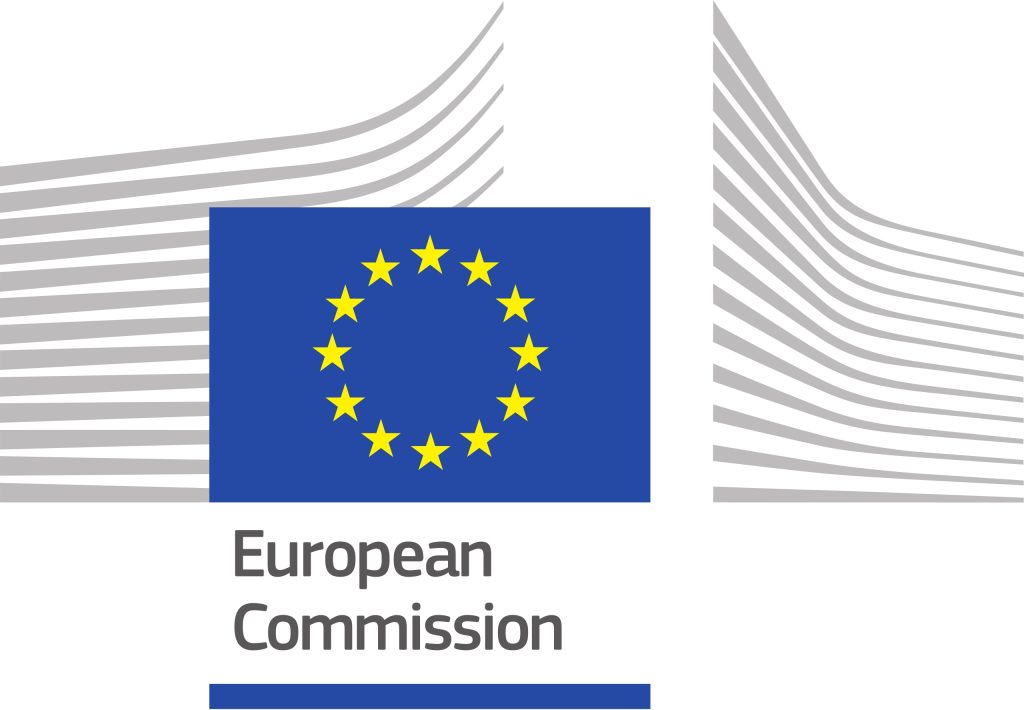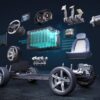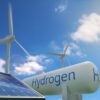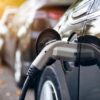
Demonstration of innovative solutions for high-capacity, reliable, flexible, and sustainable hydrogen compression technologies in commercial applications
Expected Outcome:
In order to accelerate the European green transition and achieve the targets set in the European Green Deal and the European Climate Law, the scale of hydrogen projects has been increasing rapidly in recent years. There is a clear shift of focus from small, decentralised H2 production units, towards large scale supply chains with centralised multi-megawatt electrolysers and large filling centers for gaseous hydrogen distribution. In addition, fleets of busses, transport trucks, garbage trucks, and other HDV are being deployed around Europe, necessitating the expansion and reinforcement of today’s infrastructure with high capacity HRS to ensure fast, safe, reliable and sustainable delivery of large quantities of hydrogen.
The outlet pressure of green hydrogen production systems is generally not more than 30 bar, and a compressor is necessary for most applications (large-scale filling center, high capacity HRS, gas-pipeline injection) to reach the target pressure (minimum 500 bar for filling center, up to 1000 bar for HRS, up to 200 bar for pipelines). These compressors are subject to challenging requirements and are one of the main obstacles to achieving an economical and energy-efficient hydrogen infrastructure.
Project results are expected to contribute to all of the following expected outcomes:
- Contributing to strengthening European leadership in the H2 value chain infrastructure solutions, based on compression technologies that will be applicable for H2 mobility, power-to-gas and industrial use of H2
- Accelerating the deployment, uptake and diffusion of European innovative compression technologies, through wide and early engagement with end-users, SMEs, start-ups, and regulatory & standardisation bodies;
- Contributions to at least 1 full scale demonstrator of breakthrough and game-changing hydrogen compressor by 2027, with a focus on safety and reliability;
- Foster the replication of the solutions demonstrated in the project in at least 5 additional locations by 2030
- Lowering the costs of production of green hydrogen, thus accelerating the expansion of a hydrogen-based infrastructure (for which hydrogen compression is a key element).
Project results are expected to contribute to the following objectives of the Clean Hydrogen JU as reflected in the SRIA 2021-2027:
- Improve through research and innovation, including activities related to lower Technology Readiness Levels (TRL), the cost-effectiveness, reliability, quantity and quality of clean hydrogen solutions; including production, distribution, storage and end uses developed in the Union;
- Carry out demonstrations of clean hydrogen solutions with the view to local, regional and Union-wide deployment; addressing renewable production, distribution, storage, and use for transport and energy-intensive industries as well as other applications.
More specifically the above will be achieved by contributing to the following SRIA compression-specific objectives:
- To develop more efficient compressor technologies
- To reduce the total cost of ownership of compression and purification technologies
- To increase the reliability and lifetime of compression and purification technologies
The demonstration is expected to contribute to the following KPIs of the Clean Hydrogen JU SRIA:
- Technical lifetime of the compressor: 14 years immediately, with potential to reach 20 years in 2030
- Electrical energy consumption per kg hydrogen:
- from 5 to 900 bar: 4 kWh/kg immediately, with potential to reach 3 kWh in 2030
- from 30 to 200 bar: 2.5 kWh/kg immediately, with potential to reach 2 kWh in 2030
- Mean time between failures (MTBF): 40,000 h immediately, with potential to reach 60,000 h in 2030
- OPEX:
- For HRS and filling center, including auxiliaries: 0.07 €/kg immediately, with potential to reach 0.03 €/kg in 2030
- For pipeline, including auxiliaries: 0.03 €/kg immediately, with potential to reach 0.01 €/kg in 2030
- CAPEX:
- For HRS compressor: 933 €/(kg*day) immediately, with potential to reach 438 €/(kg*day) in 2030
- For pipeline compressor: 167 €/(kg*day) immediately, with potential to reach 108 €/(kg*day) in 2030
- At least 90 % availability throughout the demonstration phase
- Peak noise emissions of maximum 60 dB measured at 5m distance
Scope:
Today’s mechanical compressors have significant drawbacks in terms of CAPEX, OPEX, maintenance, electricity consumption and noise, leading to a weakness in this area. Innovative non-mechanical compression solutions do exist and have been developed & demonstrated in previous EU-funded projects (PHAEDRUS, Don Quichote, H2Ref, H2Ref-DEMO, COSMHYC, COSMHYC XL, COSMHYC DEMO) over the past few years and have increased in TRL. However, these solutions require further experience in their deployment to overcome safety and administrative regulatory challenges for the permitting of these installations. It is also necessary to perform long-term demonstration, to confirm the low O&M costs and the feasibility of an acceptable life-time, and thereby enable a rapid market introduction. In addition, the versatility of these innovative solutions still needs to be increased, by enhancing the output pressure (up to 950 bar), proving the ability of the technology to operate under challenging conditions corresponding to emerging H2 use cases (offshore platforms, cold/hot climatic zones, remote sites…) and improving the resistance of innovative technologies to low purity hydrogen.
This topic aims at further supporting the deployment of critical components in the hydrogen value chain, with demonstration in a real-life application, to increase confidence in and familiarity with hydrogen technologies. It involves dimensioning, manufacturing, installing and demonstrating a compression solution at a client site, including all related safety considerations and regulatory challenges with local authorities. The demonstration site should be a fully commercial site subject to all regulatory requirements of the country in which is deployed, and should be representative site for replication use-cases.
The demonstration campaign should include 24-month demonstration of the compression solution in a full-scale commercial setting, with direct coupling to a renewable energy source for either the hydrogen production system, the power supply of the compressor, or both.
Furthermore, the site should include some challenging aspects, such as environmental challenges (heat, marine conditions, high altitude, urban, etc…). The applicant will need to describe in the proposal which particular challenges it intends to address, their negative impact on the compressor operations and the technical solution proposed to overcome them. The power supply for the compressor and/or the power supply for the electrolyser should be directly provided by a sustainable/renewable energy source to prove the suitability of the compressor for RES, e.g. by demonstrating the ability to deal with energy peaks and intermittent hydrogen/electricity supply in an efficient way. Finally, the sustainability aspects of the solution in terms of circulatory, upcycling, second life and end of life concepts should be addressed in the project.
The compression solution should consist of either an innovative, non-mechanical, compression solution, or a combination of different solutions including at least one innovative, non-mechanical, technology (in which case the non-mechanical compressor should be the main focus of the project, and the mechanical compressor should show highly innovative aspects and advantages), and have a representative scale:
- HRS & Filling Center use-case: at least 2.5 tonnes per day from maximum 30 bar to 500 - 1000 bar (depending on application);
- Gas Pipeline use-case: at least 5 tonnes per day from maximum 30 bar to minimum 100 bar.
The reliability and advantages of the compressor should be demonstrated in terms of availability, performance, compatibility with RES, maintenance, scalability, safety, compliance and a robust business case. The compressor should be demonstrated in a commercial setting for at least two years, to show the maintenance requirements and reliability under different seasonal conditions.
A suitable demonstration site should be secured ahead of the proposal submission and convincingly described. The infrastructure directly surrounding the compressor (e.g. HRS or filling center) and other activities necessary for the project launch (e.g.: civil works, safety studies…) as well as specific manufacturing equipment required to build the compressor may be funded.
A real (not simulated) RES-profile-following power consumption of the electrolyser or compressor is a requirement of the demonstration. While the COSMHYC & H2Ref series of projects focused on hydrogen refueling stations, the project should develop a versatile technology which can also be used in the following applications: filling centers, industrial use cases or injection into a gas pipeline.
The project should provide a convincing and detailed roadmap towards large-scale manufacturing of the commercial compressor in the European Union. This should include realistic funding plans for a factory, quantitative details of the required infrastructure and plant operation needs, potential sites and their requisites, including permitting and administrative constraints, and a timeline for industrialisation. The compressor should be designed for a standardised and large-scale production process, optimising the manufacturing methods and lowering per-unit production costs and time.
In addition to the technical feasibility of the compression solution, the following aspects are to be addressed in the scope of the project:
- Special attention should be paid to the safety measures specifically linked to the compressor;
- Planning the safety concept of the whole demonstration site beyond the system limits of the compressor;
- Flexibility of the solution for several use-cases:
- Wide range of inlet pressures (from 1 bar to 200 bar, depending on application);
- Intermittent operation in line with the RES considered in the project;
- Functionality as baseload compressor, as well as for receptacle filing (dynamic outlet pressure);
- Reliable operation in challenging conditions (e.g.: hot/cold climates, marine environment, high altitude, remote).
- Sustainability, recyclability, and circularity aspects, especially if critical raw materials are used (for example Platinum Group Metals);
- Permitting and regulatory challenges at the demonstration site on a national and European level, including making recommendations for future regulation framework;
- Demonstrating economy of scale and TCO, including a detailed roadmap to industrialisation;
- Any noise disturbance and vibrations coming from the compressor should be quantified and the consequences on the surrounding infrastructure clearly explained and mitigated;
- The adaptability of the solution for different green hydrogen sources should be addressed, including low quality gas, very low inlet pressure, high inlet pressure from transmission pipeline and intermittent production;
- State of health and degradation aspects should be analysed in-situ and quantified;
- How the compressor deals with lower quality hydrogen (either as supplied gas, or for use-cases with less strict requirements) should be addressed;
- In the case of waste energy valorisation, the associated costs (CAPEX & OPEX) of integrating this energy source;
- The OPEX for different scenarios and different modes of operation, for example for a compressor not working at full capacity, should also be addressed and described, in order to get a realistic idea of the “real-life” energy consumption to be expected in a real application (where the compressor will not always run on nominal load);
- End-of-life concepts or second life/upcycling concepts.
This topic is expected to contribute to EU competitiveness and industrial leadership by supporting a European value chain for hydrogen and fuel cell systems and components.
Proposals should provide a preliminary draft on ‘hydrogen safety planning and management’ at the project level, which will be further updated during project implementation.
For additional elements applicable to all topics please refer to section 2.2.3.2.
Activities are expected to achieve TRL 8 by the end of the project - see General Annex B.
At least one partner in the consortium must be a member of either Hydrogen Europe or Hydrogen Europe Research.
The maximum Clean Hydrogen JU contribution that may be requested is EUR 6.00 million – proposals requesting Clean Hydrogen JU contributions above this amount will not be evaluated.
Purchases of equipment, infrastructure or other assets used for the action must be declared as depreciation costs. However, for the following equipment, infrastructure or other assets purchased specifically for the action (or developed as part of the action tasks): compression prototype/s and related components, costs may exceptionally be declared as full capitalised costs., costs may exceptionally be declared as full capitalised costs.
The conditions related to this topic are provided in the chapter 2.2.3.2 of the Clean Hydrogen JU 2024 Annual Work Plan and in the General Annexes to the Horizon Europe Work Programme 2023–2024 which apply mutatis mutandis.
Specific Topic Conditions:
Activities are expected to achieve TRL 8 by the end of the project – see General Annex B.
General Information
In order to accelerate the European green transition and achieve the targets set in the European Green Deal and the European Climate Law, the scale of hydrogen projects has been increasing rapidly in recent years. There is a clear shift of focus from small, decentralised H2 production units, towards large scale supply chains with centralised multi-megawatt electrolysers and large filling centers for gaseous hydrogen distribution. In addition, fleets of busses, transport trucks, garbage trucks, and other HDV are being deployed around Europe, necessitating the expansion and reinforcement of today’s infrastructure with high capacity HRS to ensure fast, safe, reliable and sustainable delivery of large quantities of hydrogen.
The outlet pressure of green hydrogen production systems is generally not more than 30 bar, and a compressor is necessary for most applications (large-scale filling center, high capacity HRS, gas-pipeline injection) to reach the target pressure (minimum 500 bar for filling center, up to 1000 bar for HRS, up to 200 bar for pipelines). These compressors are subject to challenging requirements and are one of the main obstacles to achieving an economical and energy-efficient hydrogen infrastructure.
Project results are expected to contribute to all of the following expected outcomes:
- Contributing to strengthening European leadership in the H2 value chain infrastructure solutions, based on compression technologies that will be applicable for H2 mobility, power-to-gas and industrial use of H2
- Accelerating the deployment, uptake and diffusion of European innovative compression technologies, through wide and early engagement with end-users, SMEs, start-ups, and regulatory & standardisation bodies;
- Contributions to at least 1 full scale demonstrator of breakthrough and game-changing hydrogen compressor by 2027, with a focus on safety and reliability;
- Foster the replication of the solutions demonstrated in the project in at least 5 additional locations by 2030
- Lowering the costs of production of green hydrogen, thus accelerating the expansion of a hydrogen-based infrastructure (for which hydrogen compression is a key element).






Demonstration of innovative solutions for high-capacity, reliable, flexible, and sustainable hydrogen compression technologies in commercial applications 0 reviews
Login to Write Your ReviewThere are no reviews yet.